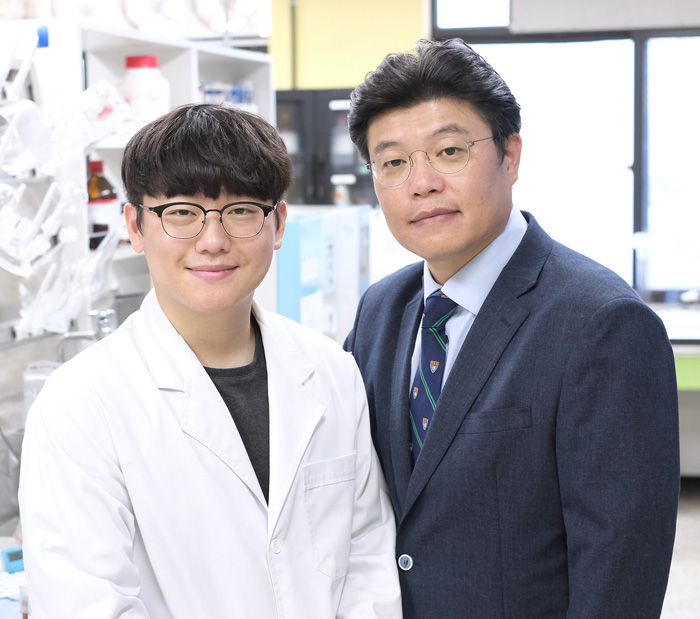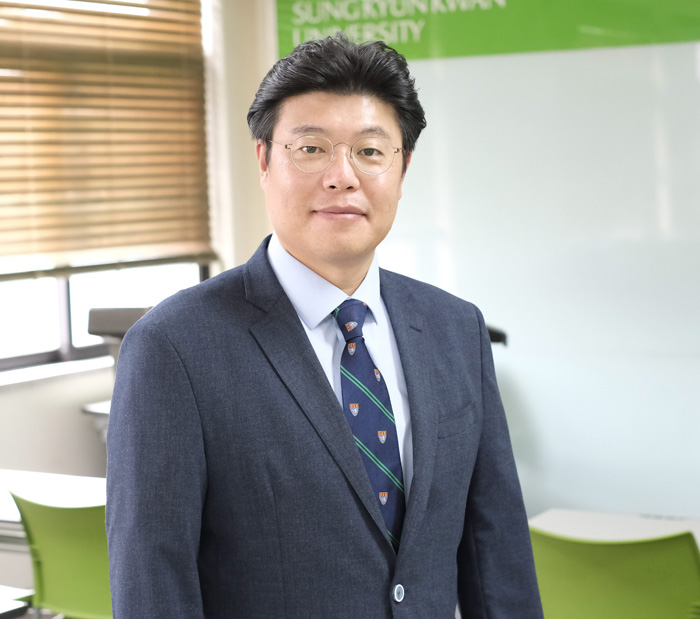Research Stories
Discovery of a Novel Host Material to Obtain Highly Efficient Upconversion Luminescence at a Single-band Wavelength
Overcome limitations of the conventional host material using laser liquifying-quenching method
Chemical Engineering
Prof.
KIM, DONG HWAN
Lanthanide trivalent ions (Ln3+) embedded in an inorganic host solid are capable of “upconversion”, which is the fascinating ability to convert multiple low-energy photons into a higher-energy photon. Upconversion luminescence suggests the promise of Ln3+-doped materials in emerging novel applications, such as energy harvesting for solar cells or deep tissue optogenetics.
However, it has been difficult to further improve the upconversion efficiency because the upconversion efficiency and the upconversion emission spectrum are determined by the complex interaction between the host material and the lanthanide ion at an atomic level.
Prof. Dong Hwan KIM, a professor at the Department of Chemical Engineering of SKKU, has developed the novel host material that does not have a short-range order (1st coordination order) by liquefying and quenching the host material using a laser, to maximize the host interactions, thus, realizing highly efficient upconversion luminescence at a single-band wavelength.
The results of this study are significant not only in scientific fields but also in real world applications because the intrinsic limitations of the conventional host materials are overcome. This new material will be used in macroscale laser technologies and photonic integrated circuit devices.
Please find out more details about this research from the published article:
B. S. Moon, H. E. Kim and D. H. Kim, "Ultrafast Single-band Upconversion Luminescence in a Liquid-quenched Amorphous Matrix," Advanced Materials, 30, 1800008 (2018). (featured on the front cover)


